Shimano Di2 vs SRAM AXS: Which is the right electronic groupset for you?
Di2 vs AXS — what are the relative merits of Shimano and SRAM electronic shifting?
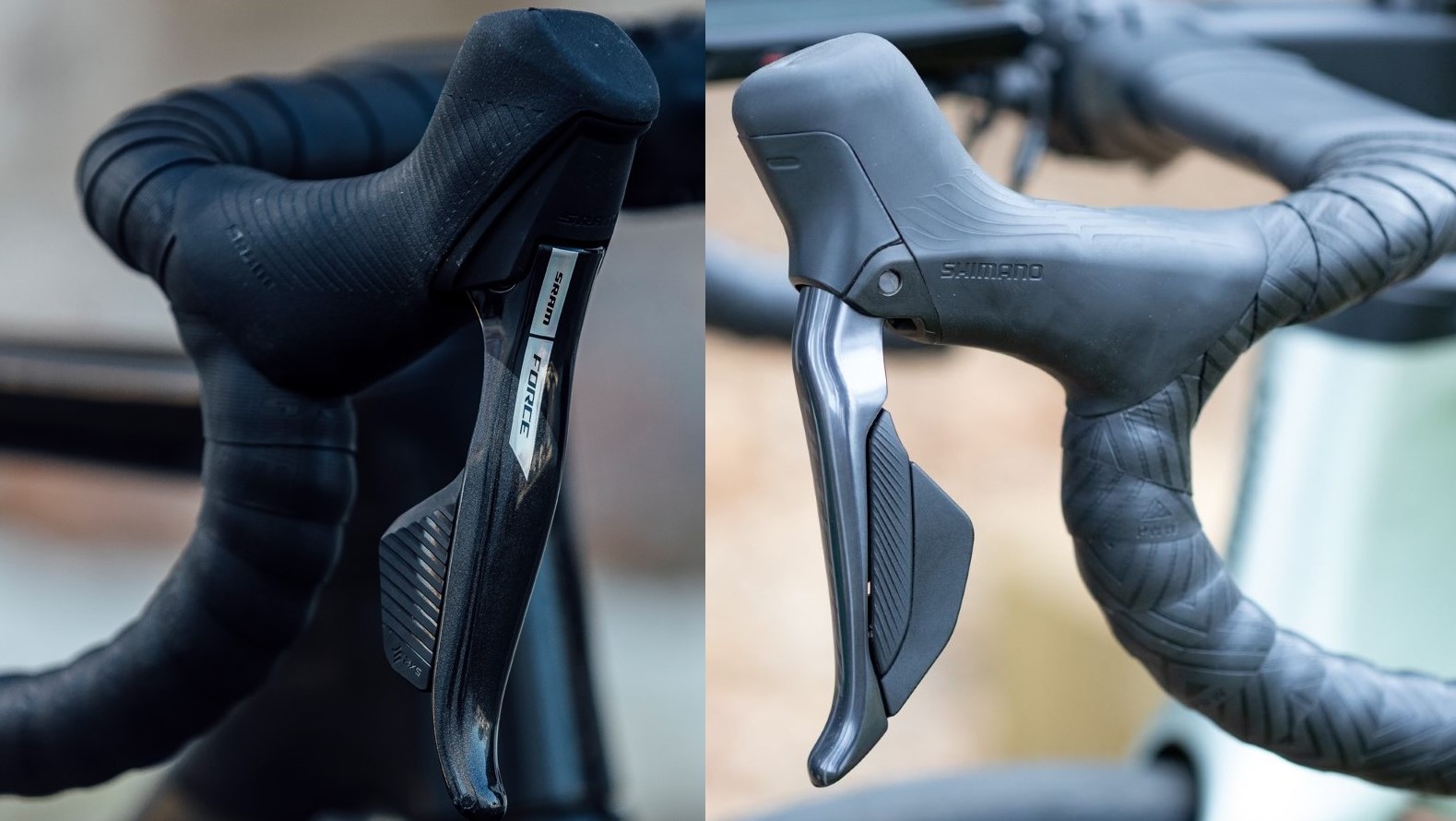
With four electronic shifting systems available, Shimano Di2, SRAM AXS, Campagnolo Wireless and FSA K-Force WE, there's more choice than ever if you want to get rid of mechanical gear cables. Here, we'll concentrate on the two main choices, Shimano and SRAM.
While Campagnolo only offers Super Record Wireless and FSA the K-Force WE groupset. Shimano offers electronic shifting at Dura-Ace, Ultegra and 105 levels. SRAM meanwhile can provide electronic shifting at Red, Force, Rival and Apex levels. All the electronic groupsets from these brands are currently 12-speed. (12 rear sprockets)
The groupsets can shift from cog to cog with lightning-quick speed and accuracy — if they are set up properly — and require fairly minimal upkeep except for keeping things clean, charged and lubed, and replacing moving parts as they wear out.
With that, choosing between a Di2 and AXS groupset (SRAM is in the process of dropping the eTap part of its groupset nomenclature, although you'll still see some parts labelled eTap AXS) is becoming increasingly difficult, each system has its strengths and weaknesses and key selling points. Below are the factors we would use when it comes to choosing the best electronic road bike groupset for you.
Shifting
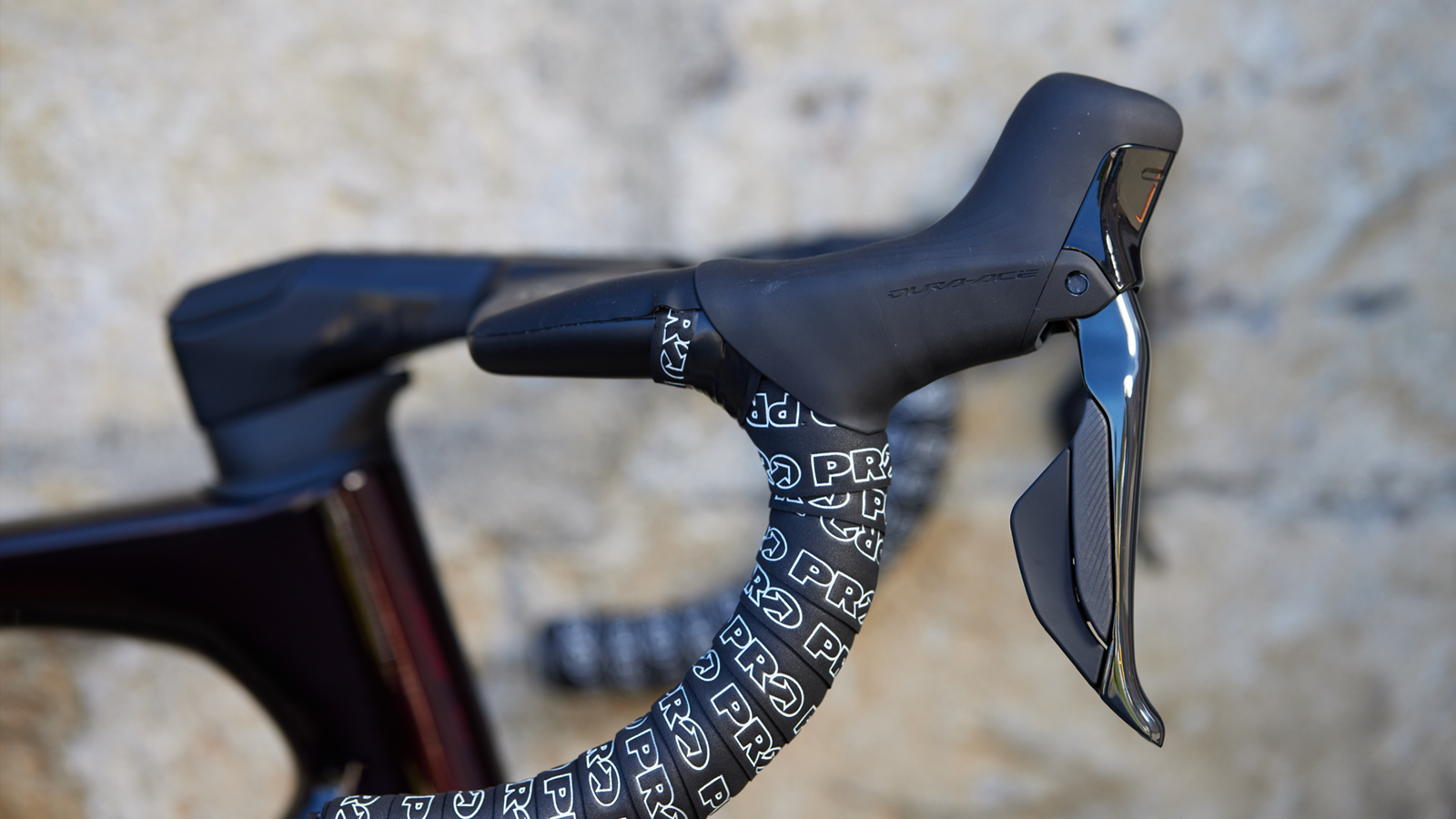
Shimano was the first of the big three-component brands to introduce electronic shifting back in 2009. Although Mavic beat it to the punch way back in 1992 with the now-long discontinued Zap group which wasn't adopted en-masse at the time.
Before we go any further, di2 stands for Digital Integrated Intelligence in case you were wondering.
The layout of Shimano's Di2 shift buttons almost mirrors its mechanical shifting; two small shift buttons are situated just behind the blade of the brake lever. For experienced riders, and those who have spent any time using a Shimano-equipped bike, the transition to Shimano Di2 will be seamless and intuitive, and shifts are met with a tactile click.
The latest race content, interviews, features, reviews and expert buying guides, direct to your inbox!
The only minor criticism we have of the Di2 shifting layout is that with thick gloves on, it’s sometimes hard to feel the difference between the buttons, although that's been improved with the latest generation groupsets.
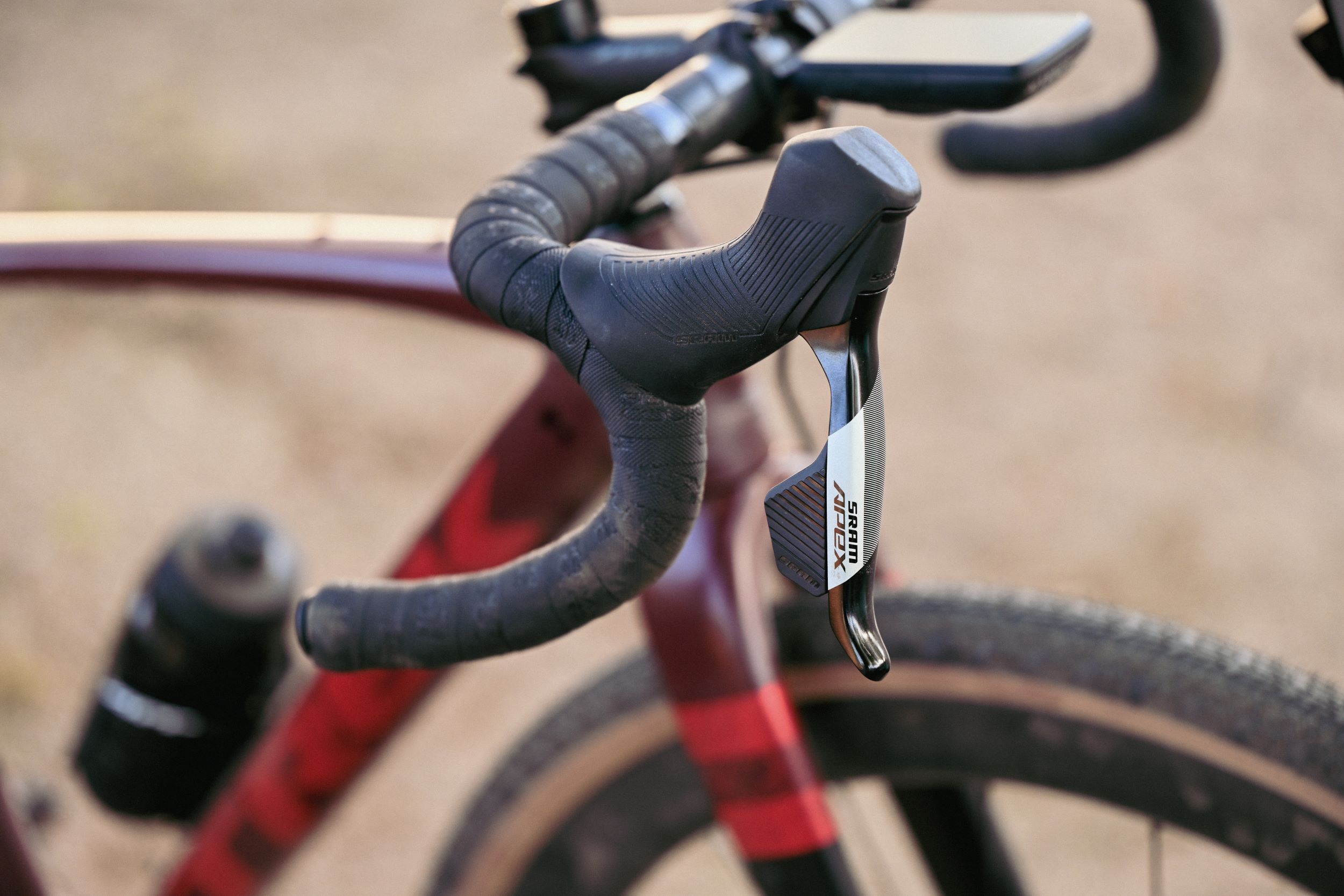
When SRAM launched its first electronic groupset in 2015, it came at the shifting problem with a clean slate. Instead of mimicking the DoubleTap system used for its mechanical groupsets, the brand opted to make the right paddle shift to a harder gear, the left paddle shift to an easier gear, and using both at the same time to shift the front derailleur. This layout is extremely intuitive to use.
Both AXS and Di2 allow you to configure them via a phone app. If you want to reverse what the buttons do, you can do that.
More usefully, you can set the shifting up so that it does some of the work for you. At its most autonomous, as you shift up or down the cassette, the groupset will shift at the front so that you're in the optimum set-up to prevent cross-chaining. (riding in the big chainring and largest sprocket) Shimano calls this Synchronized (Syncro) shifting, and SRAM calls it Sequential Shifting.
Both Di2 and AXS also have semi-automatic versions which will shift a few cogs up or down and the rear as you change at the front, so you're in the next harder or easier gear and are less likely to be left spinning or grinding after a front shift. How many sprockets they shift is user-configurable.
When it comes to shifting speed, as in how quickly each group moves the chain to the next cog, Shimano has the edge here at the moment with slightly quicker shifts. This is likely due in part to the fact that AXS has to wait a millisecond to see whether you are just pressing one shift paddle or both.
Shimano lets you adjust shifting speed if you want to, via its app. Sram doesn't yet offer this function.
Batteries
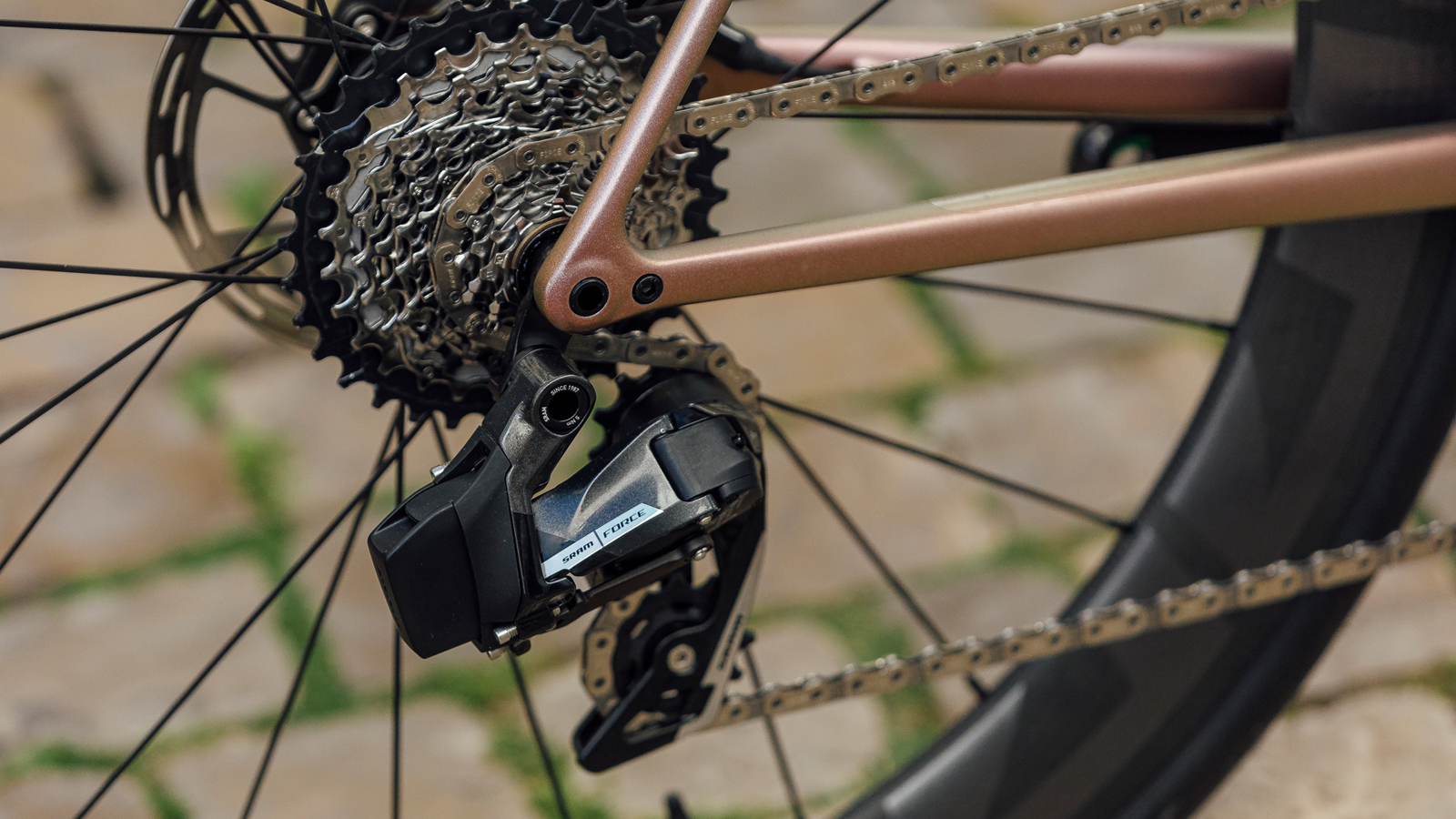
AXS is entirely wireless, so each component needs to have its own battery, while Di2, with its wires, can run everything off one single battery housed in the bike's frame.
You unclip the AXS batteries and charge them off-bike with a charging cradle, whereas the Di2 battery is charged in situ via a port in the rear derailleur.
The connection between the shifters and the derailleurs is now wireless in both AXS and the latest generation Di2. The shifters are powered by disposable coin cell batteries, which should give you around two years of shifting.
SRAM derailleur batteries will need to be charged after about sixty hours of ride time, depending on how much you shift. Typically, the battery on your rear mech will die first because that’s where the most shifting happens; if you do get caught out, you can always swap in the battery from your front derailleur to get you home, as Sepp Kuss did while riding a descent during the 2023 Giro d'Italia.
Shimano’s Di2 battery is claimed to last about 1,000km between charges, depending on usage. When your Di2 battery does start to go flat, you will lose front shifting first to preserve enough power to get you home before your rear mech stops and your bike is converted to a single-speed.
Having spent quite a bit of time on both systems, I have found myself caught out more times with a dead battery with Di2 than eTap. The battery lasts such a long time, that I simply forget it’s there until the front derailleur stops working, whereas the comparatively short battery life of the eTap batteries is a blessing in disguise because you’re unable to forget they exist.
Both systems allow you to check battery levels on the app and also include warning lights on the derailleurs themselves, although these are easy to miss. Shimano flashes red when there is 25% or less battery left. Flashing red on SRAM simply means 'charge'.
Gearing
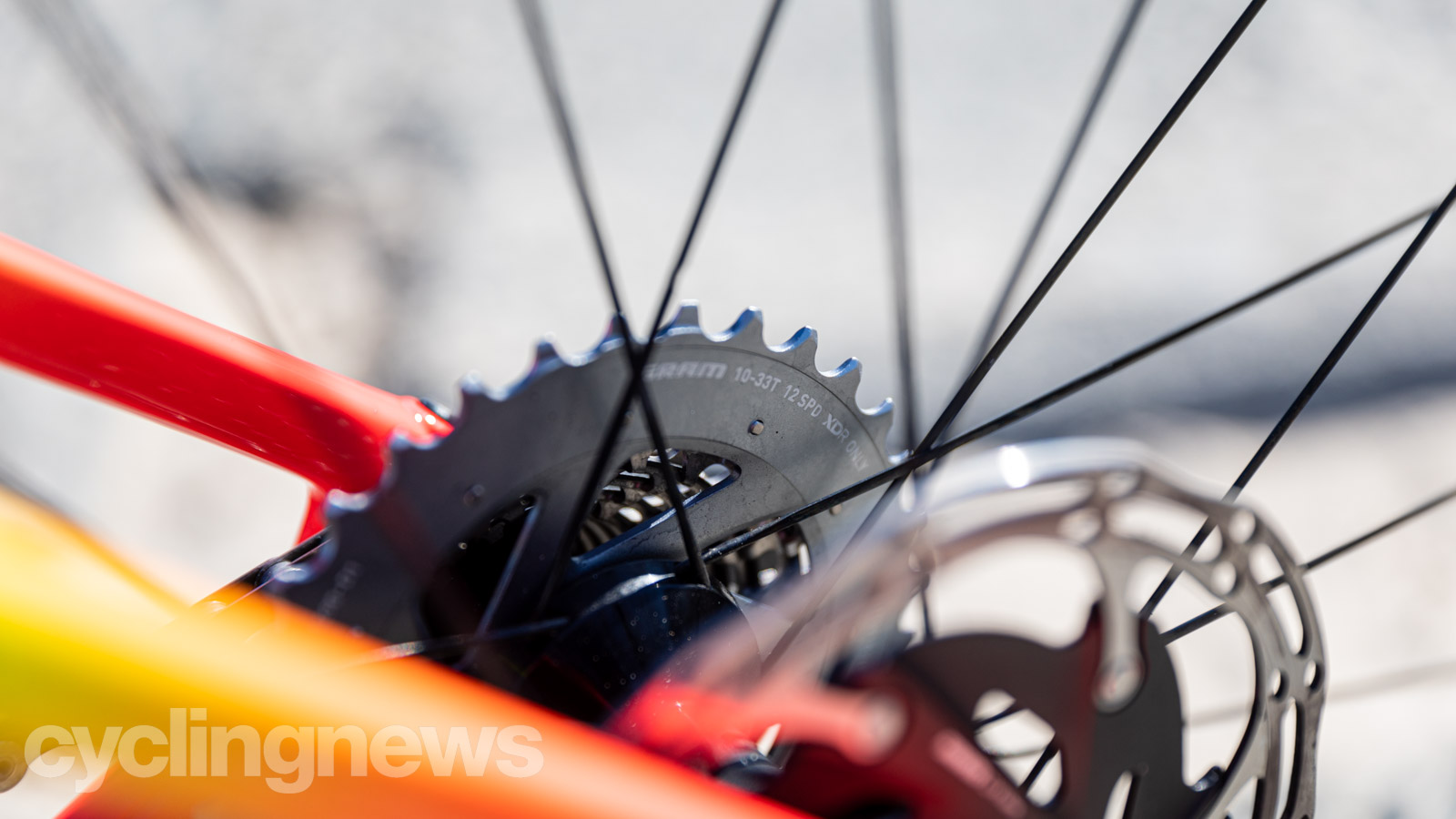
With the latest AXS groupsets, SRAM added a 12th cog to the rear cassette, and with it, a new approach to gearing it calls 'X-Range'. This new system trades traditional gearing combinations for generally smaller chainrings and wider-range cassettes. All the AXS rear derailleurs include a clutch, the fluid-damped Orbit on Red and Force models and spring-operated on Rival and Apex. This tech helps reduce chain bounce and slap over rougher roads.
Based around a 10T smallest cog, the AXS 12-speed cassettes come in 10-26T, 10-28T, 10-32T and 10-36T ranges which work with the standard AXS derailleur, although there are two derailleur cage lengths which work with different subsets of these.
At the front chainrings are available in 46/33T, 48/35T and 50/37T and there are also power meter kits for Red that go as large as 56/43T. In addition, SRAM has XPLR AXS derailleurs which work with single chainring groupsets and can handle ranges as wide as 10-42T.
Sram Apex AXS is a single chainring groupset only. If you want an even wider ratio, SRAM Eagle AXS mountain bike rear derailleurs can communicate with road shifters, allowing you to fit a 10-52T cassette in a 'mullet build'. As used by Kasia Niewiadoma to win the world gravel championships.
At the Red and Force spec levels, the chainrings are a single piece, which may reduce weight and improve shifting, but when you wear one out, you need to replace the whole entity, which can be expensive, especially if you have the chainring integrated Quarq power meter as that will need to be replaced too. SRAM does give you a 50 per cent discount on a replacement power meter. Our advice if you have this equipment is to really stay on top of chain care or even just replace your chain once a year to be safe.
SRAM also offers what they call Wide groupsets at Force and Rival levels, which provide lower gearing and a 2x 43/30T or a 1x 40T crankset option. They also push the chain line out to 47.5mm from 45, improving clearance for gravel tyres and providing compatibility with mountain bike bottom bracket standards. Apex AXS is Wide-spaced by default.
Chainline is the distance between the centreline of your frame and the centreline of your chainring. It's more of an MTB / gravel consideration but incorrect chain line setups can affect shifting and drivetrain performance.
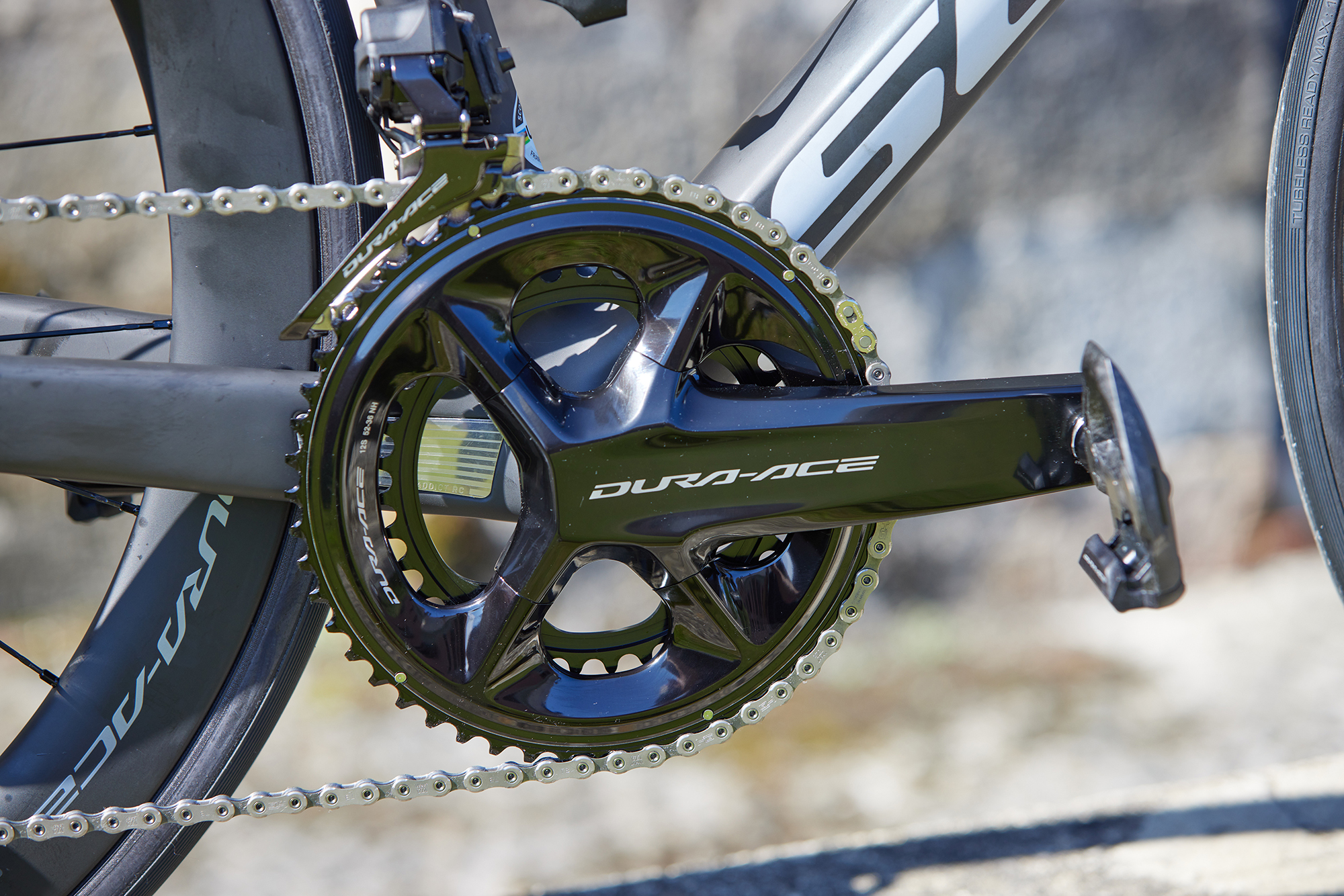
Shimano’s gearing is a bit more traditional, with 11-tooth smallest sprockets at the back and either an 11-30T, 11-34T or, in the case of 105 Di2 an 11-36T cassette option.
The chainrings come in 54/40T (Dura-Ace only), 52/36T, and 50/34T options all of which have the same four-bolt layout and are interchangeable. 105 Di2 is only available with a 50/34T chainset.
Shimano also offers its gravel / off-road specific GRX groupset in a di2 electronic version and it offers some slightly different gear ratio options. Cranksets are available in 2x setups with 48/31T or 46/30T options and rear derailleurs can accommodate 30-34T or 40-42T max sprocket sizes. Cassettes can be mixed and matched to suit.
Brakes
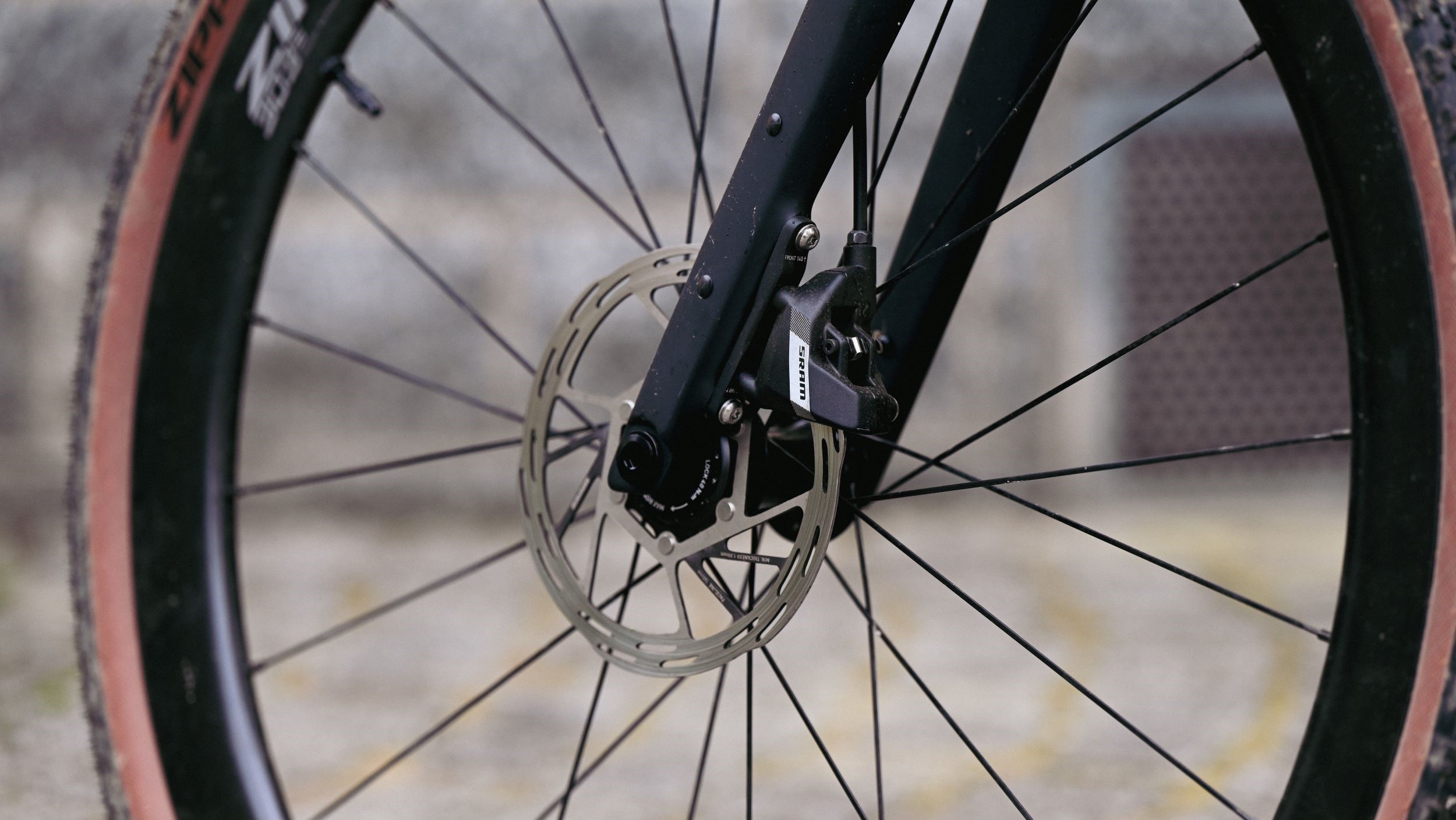
Both electronic drivetrains come with hydraulic disc brakes, and both work pretty darn well. If you need rim brakes, only Shimano provides them as an option and only at Dura-Ace and Ultegra levels.
At the levers, both SRAM and Shimano offer reach and, in higher spec groupsets, bite point adjustment. Both offer road-specific disc rotors in 160mm and 140mm sizes in a range of spec options.
Sram brakes use DOT brake fluid, whilst Shimano uses mineral oil. Both brands also offer different compounds of brake pad formulation 'resin' or the more metal-based 'sintered' to suit rider preferences and riding conditions.
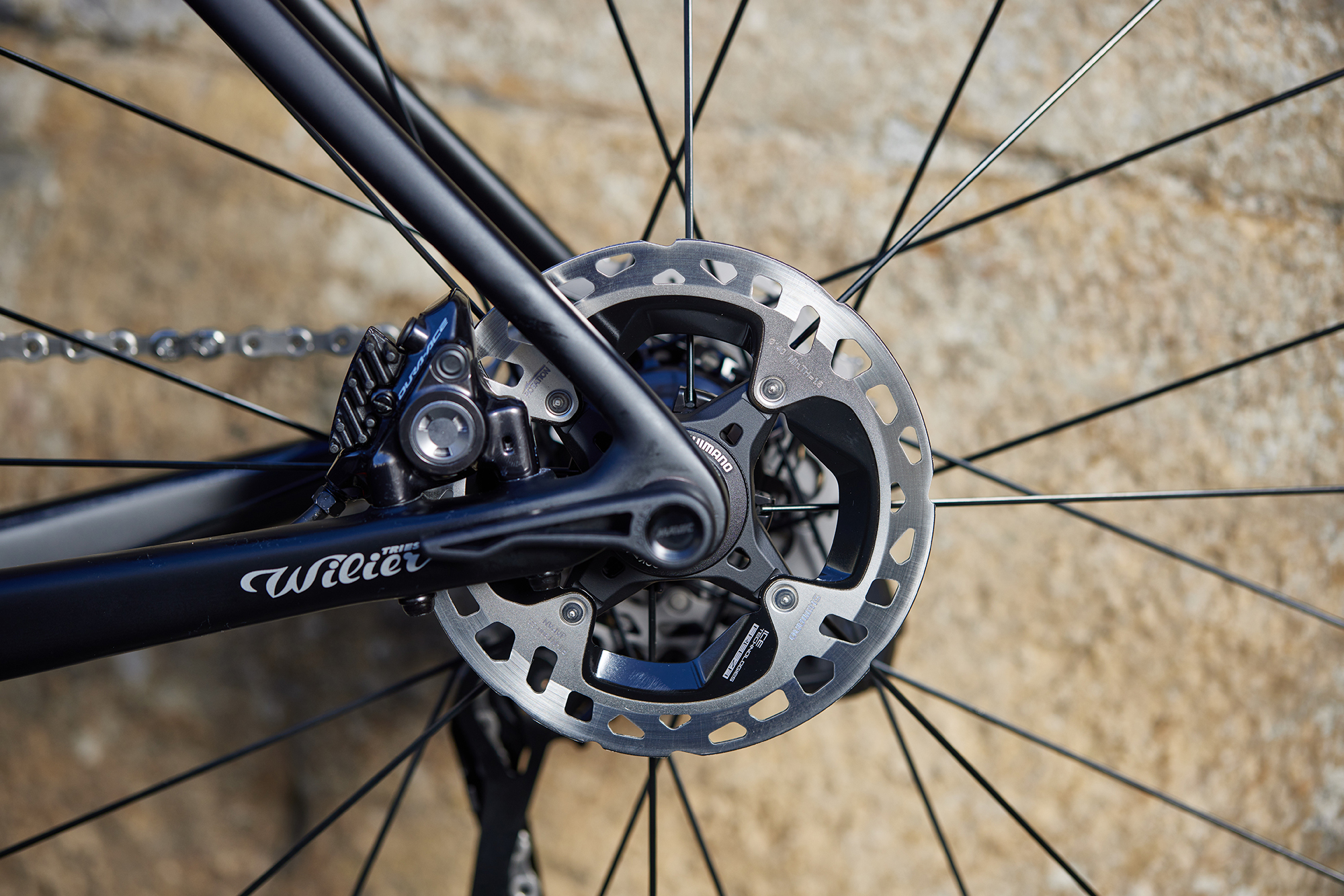
Shimano has done a fantastic job of hiding the master cylinder in its hydro brakes, and ergonomically, they are pretty darn close to their cable-driven stalemates. The brake pads on Shimano's latest disc brakes sit a bit further into the calliper when the pistons are retracted, so there is more clearance between the rotor and the pads as you roll along, meaning there's less noise from road grit that gets picked up by the rotor or a disc that's come out of true.
While they take different forms, both brands' brakes work well, offering oodles of power and modulation. They feel different, but which is best for you will come down to personal preference, and over time you will get used to whatever is bolted onto your bike.
Maintenance and cables
The main advantage of electronic drivetrains is that there are no gear cables to gum up or snap. With more of the best road bikes moving towards entirely integrated cables, this means less time trying to fish cables and housing through frames, handlebars and stems. If you are building your own bike Sram wireless groupsets do make life easier.
One of the main advantages of SRAM’s AXS system is that it’s completely wireless, meaning setting up derailleurs is pretty much as simple as bolting them on. You still have to run brake hose/cables and housing, though for hydraulic discs you will probably only ever need to do it once when building the bike.
With Shimano Di2, you will still have wiring from the derailleurs to the internal battery to contend with, but unless you are building up a frameset, this will be taken care of before your bike leaves the showroom floor.
Connectivity
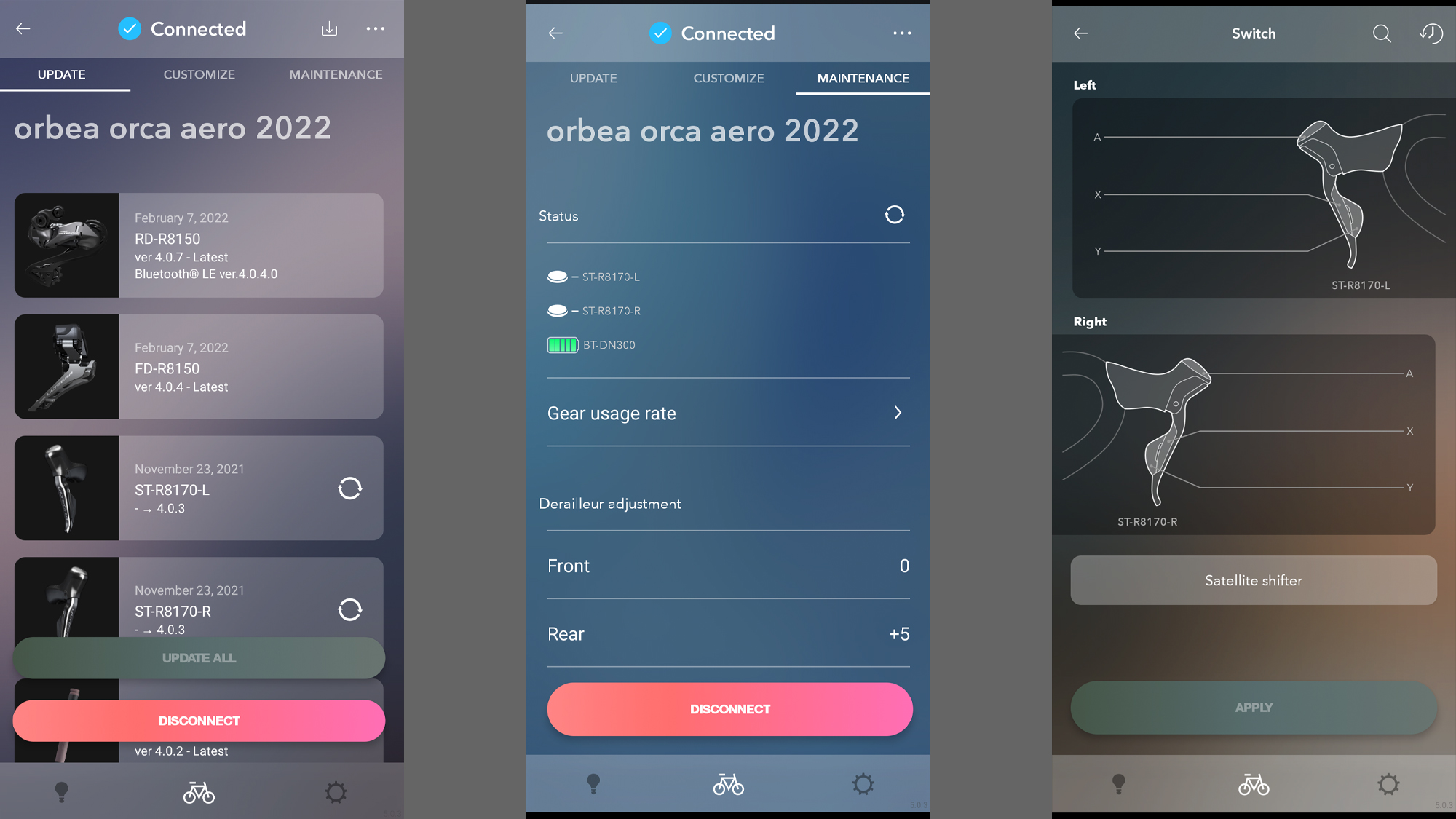
Just about every electronic device nowadays has some sort of connectivity for firmware updates, diagnostics, and customisation and both Shimano and SRAM offer phone apps that use Bluetooth to talk to their groupsets.
They're both pretty intuitive to use and allow you to set up your groupset just as you want it. You can also log in to check for firmware updates periodically and check on the health of individual components. Firmware updates usually take a matter of seconds.
Customisation
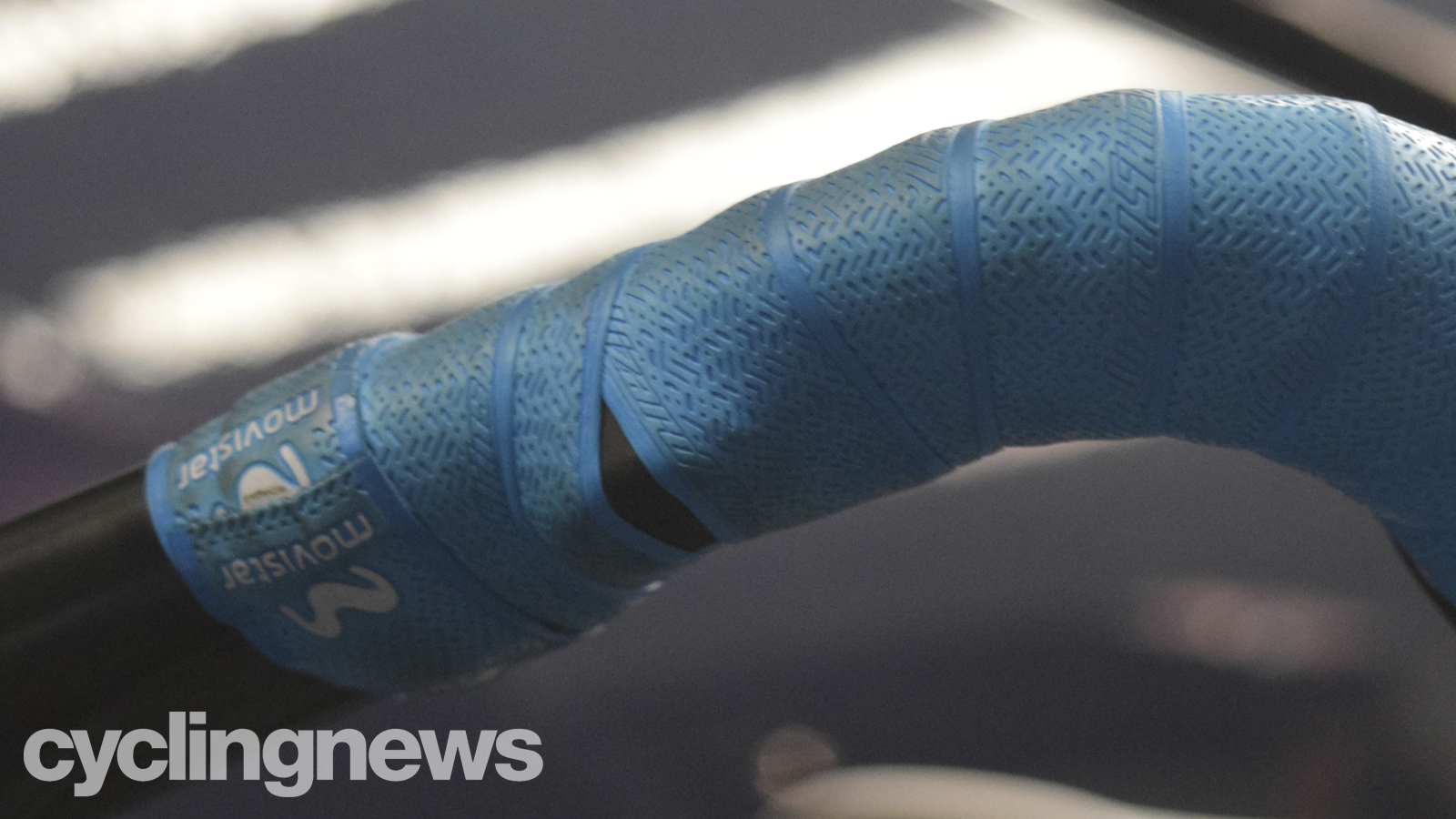
Beyond the Syncro shifting and Sequential Shifting, we talked about at the top, another advantage to electronic drivetrains is the ability to add additional satellite shifters which sit under the bar tape and protrude from it slightly. Whether it be the ability to shift from the tops or the drops without moving your hands, SRAM and Shimano both offer this functionality.
SRAM calls it satellite shifters Blips. It offers them in wired and wireless versions, although some of its groupsets don't have ports on the levers for wired Blips.
Shimano has a range of satellite shifters: sprint shifters found on the inside of the drops; climbing shifters for the tops and shifters for use on bar extensions.
The top of the brake lever hoods also have a hidden button (except in 105 Di2), which can be programmed to interact with lights and computers via ANT+ as well as to just shift gears using the e-tube app, which we mentioned turning on using the app in our Canyon Endurace review recently.
Cross compatibility
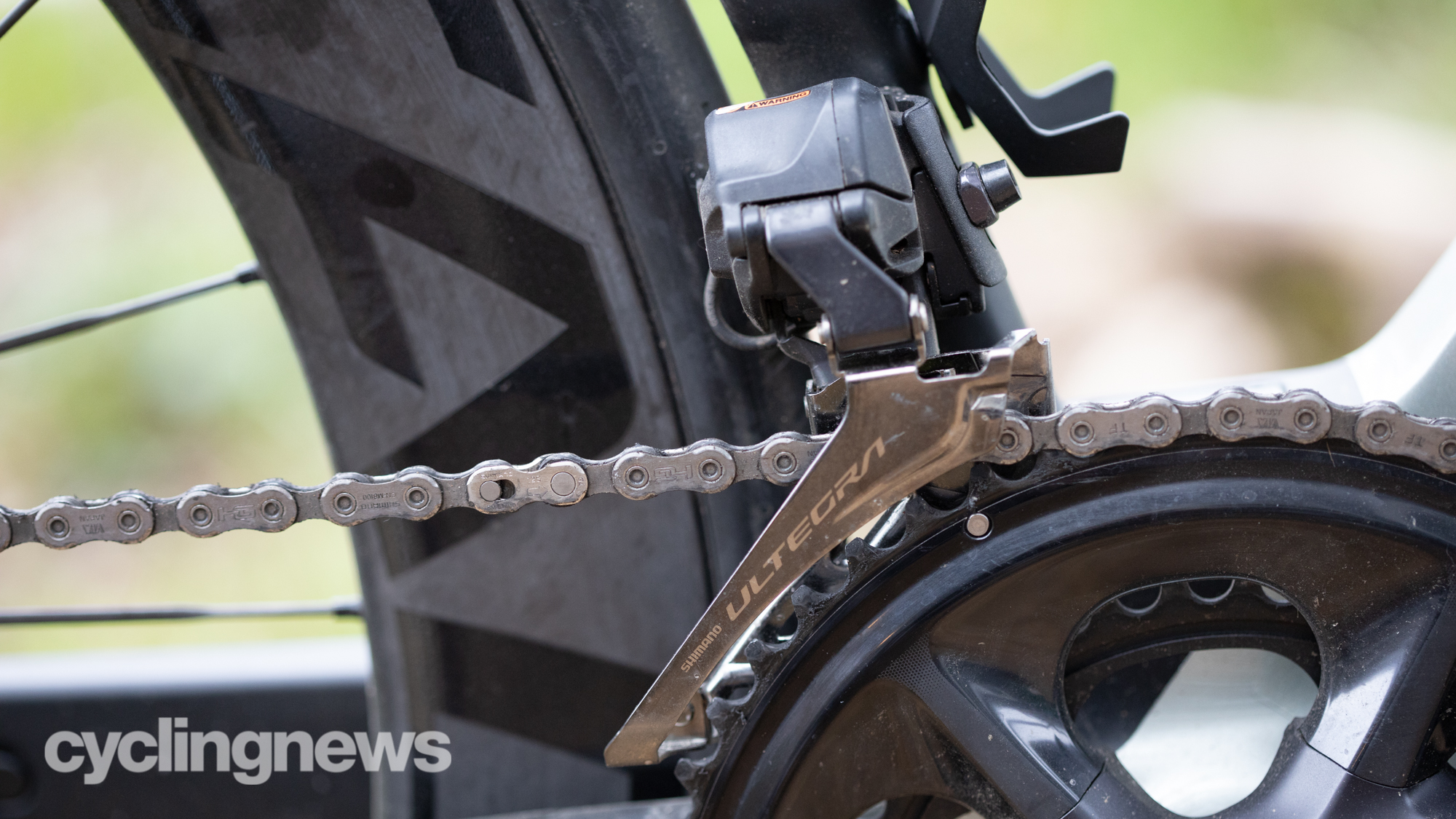
When SRAM added a cog to its rear cluster, the cassettes, chainrings, and chains were no longer interchangeable; not only with Shimano components but the vast majority of third party offerings from brands like FSA, KMC, Praxis and the like.
The 10T cog also means the brand swapped from the traditional HG freehub body to an XDR driver. Friction testing has also shown the Flat Top chain is a bit slower than a traditional chain, though longevity is said to be increased.
With that said, AXS components are cross-compatible, so if you want a 10-52T cassette and a 48T chainring, you can bolt an Eagle AXS rear derailleur on and pair it to your drop bar AXS shifters. SRAM's DUB bottom bracket standard also vastly improves frame compatibility.
Shimano, on the other hand, uses a standard 12-speed chain, the HG freehub body, and you can swap in pretty much any chainrings you’d like. Dura-Ace 9200 wheels are only compatible with Shimano 12-speed cassettes however.
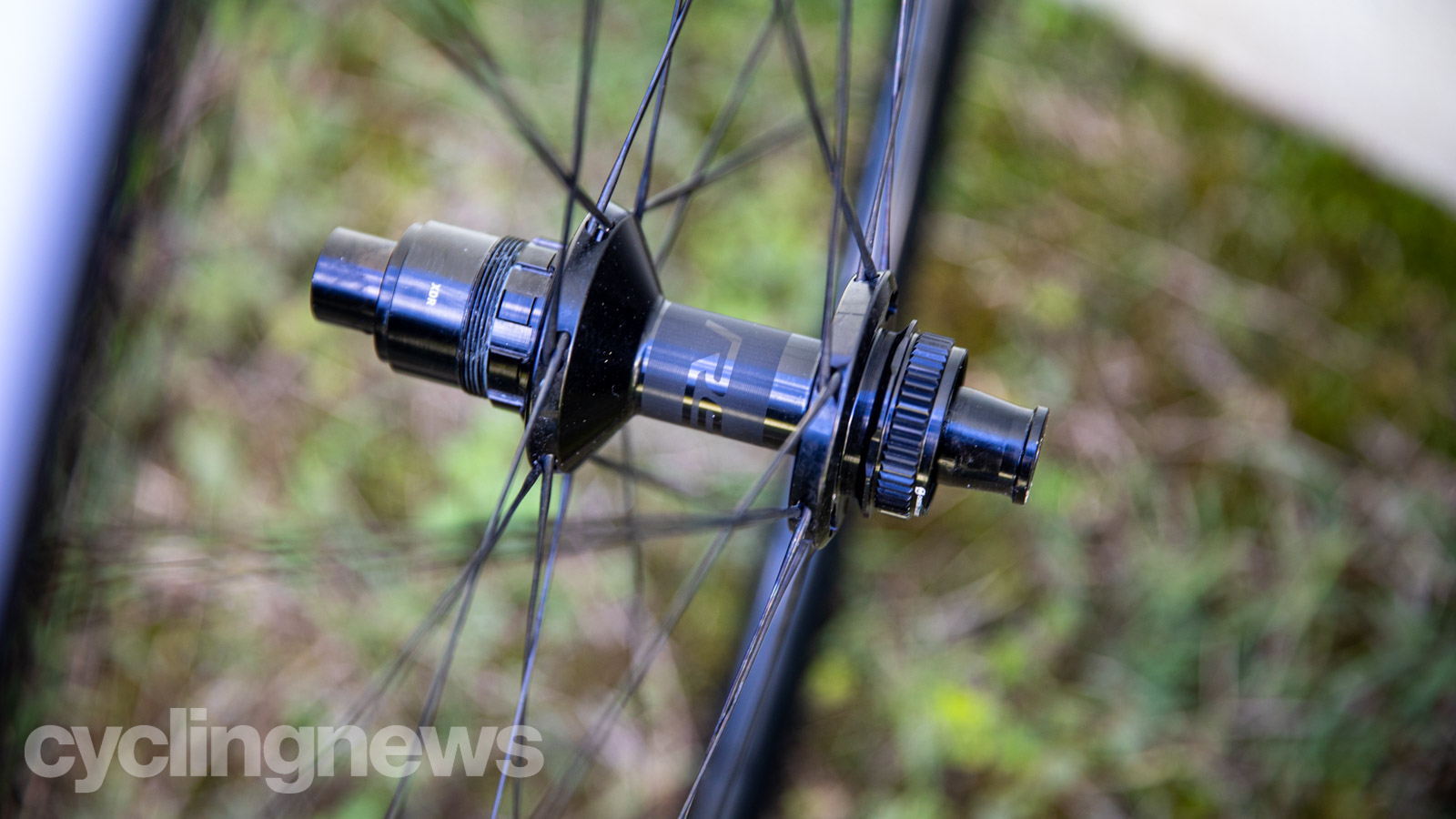
Weight
Drivetrain weights are a bit hard to pin down due to the variability, not only in chains, cassettes, crank lengths, etc but also, for example, how long the brake hoses are and whether they're measured with or without hydraulic fluid in them.
Top spec SRAM and Shimano electronic drivetrains both come in a little over 2000g, while lower specs head out towards 3000g or more.
In reality, the difference in weight will be pretty trivial. Once they are bolted onto a bike, there is no way you will be able to feel the difference in grams from a Dura-Ace Di2 group to a Red AXS group, or between Ultegra Di2 and Force AXS — or probably between Dura-Ace and Ultegra, for that matter.
Based on the Gold Coast of Australia, Colin has written tech content for cycling publication for a decade. With hundreds of buyer's guides, reviews and how-tos published in Bike Radar, Cyclingnews, Bike Perfect and Cycling Weekly, as well as in numerous publications dedicated to his other passion, skiing.
Colin was a key contributor to Cyclingnews between 2019 and 2021, during which time he helped build the site's tech coverage from the ground up. Nowadays he works full-time as the news and content editor of Flow MTB magazine.